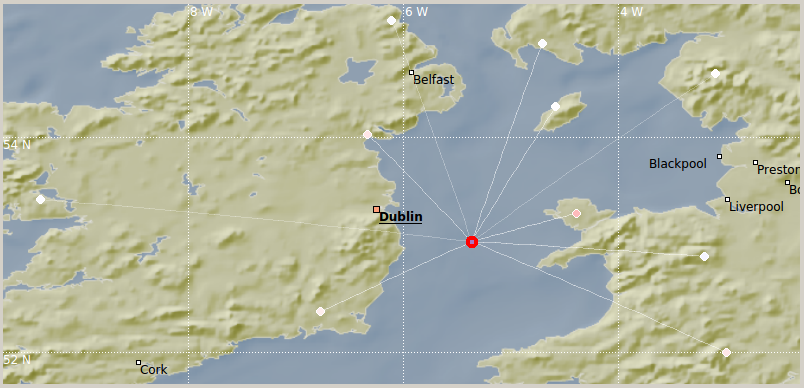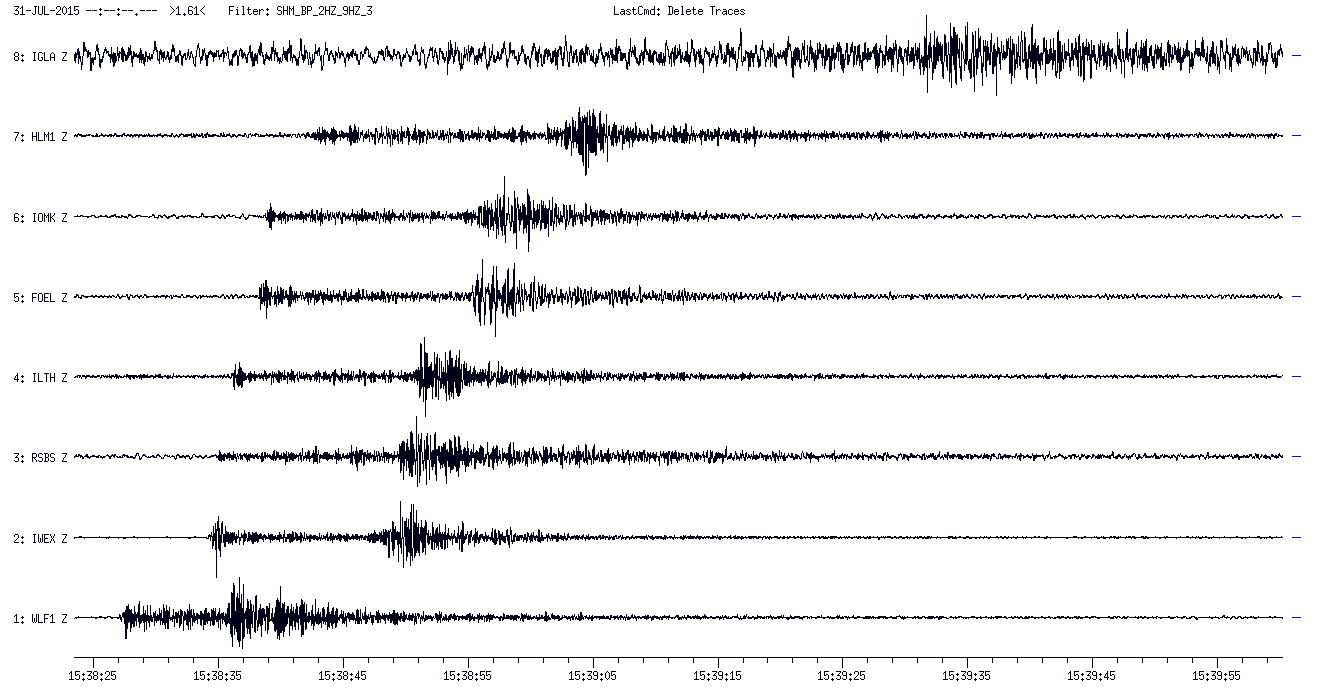On 31st July 2015 at 15:38:14 UTC an earthquake of magnitude ML 2.0 occurred in the Irish Sea, approximately 50km off the coast of Wicklow, with the epicentral location 53.01N, 5.35W.

The event was recorded at Irish National Seismic Network (INSN) stations and at several British Geological Survey (BGS) stations in Wales, Southern England and Southern Scotland. See seismogram below.
The most notable recent event in this region was the magnitude ML 3.0 earthquake which occurred off the coast of Anglesey, Wales, on the 26th of May, 2015. The largest event ever recorded in the region of the Irish Sea was the magnitude ML 5.4 earthquake that occurred on the Llyn Peninsula, Wales, on the 19th of July, 1984.

Leave a Comment
Last Updated: 22nd March 2016 by Anna
Irish Sea earthquake – 31st July 2015
On 31st July 2015 at 15:38:14 UTC an earthquake of magnitude ML 2.0 occurred in the Irish Sea, approximately 50km off the coast of Wicklow, with the epicentral location 53.01N, 5.35W.
The event was recorded at Irish National Seismic Network (INSN) stations and at several British Geological Survey (BGS) stations in Wales, Southern England and Southern Scotland. See seismogram below.
The most notable recent event in this region was the magnitude ML 3.0 earthquake which occurred off the coast of Anglesey, Wales, on the 26th of May, 2015. The largest event ever recorded in the region of the Irish Sea was the magnitude ML 5.4 earthquake that occurred on the Llyn Peninsula, Wales, on the 19th of July, 1984.
Category: Geophysics Section News & Events
Recent Posts
DIAS Astrophotography competition goes mobile for 2024
Irish scientists are part of groundbreaking discovery with James Webb Space Telescope
Dr Pauline Gagnon (formerly of CERN) to deliver two talks at DIAS
DIAS Professor announced as next President of the European Southern Observatory’s Council
Quake Shake: New programme encourages people to get involved in monitoring earthquakes
Language switcher